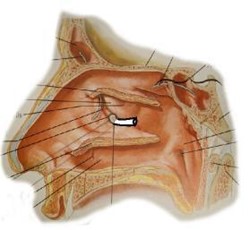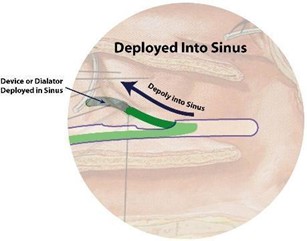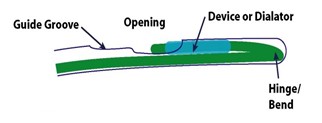Medical Device for Chronic Sinusitis
The technology is a design of a medical device that can be placed in the ostium between the maxillary sinus and nasal passageway for treatment of chronic sinusitis.



Key Benefits & Differentiators
- Minimally-invasive approach leads to no cutting, less pain, and fast recovery
- Proprietary, anatomically-designed tool for patient comfort and easy access under local anesthesia
- No scoping required, as tactile feedback indicates successful sinus access
- All-in-one design for single hand use and shorter procedures
- Biodegradable implant mechanically facilitates sinus patency, decongestion, and relief from sinus inflammation
Relieve Sinus Congestion and Inflammation without Invasive Sinus Surgery
A medical device has been designed to relieve sinus congestion and pressure in chronic sinusitis patients. Sinusitis can be caused by infection, allergy symptoms, or autoimmune problems. In chronic cases lasting over 6-8 weeks, sinus surgery under general anesthesia is often required to relieve sinus congestion and inflammation of the nasal pathway. In healthy sinus activity, cilia in the ostium move mucus up a track into the nasal pathway where it can be drained. In cases of sinusitis this function is disabled, mucus builds up in the ostium, and the sinuses become infected. In order to correct chronic sinus infections, the ostium passageway must be opened and normal cilia function restored.
The medical device is designed to treat chronic sinus infections with a minimally invasive approach, with less pain to the patient, decreased recovery time, as well as greatly shortening the duration of the procedure. The medical device is composed of a nasal implant and a catheter delivery system. The delivery system uses a catheter to gain access to the ostium through the nostril. With a retrograde delivery motion, the medical device is able to deliver the implant through a later portal on the catheter into the congested ostium from the posterior of the opening. The implant includes an open cross-section to open the passageway while exposing the cilia to promote normal function. The implant is intended to open and maintain patency of the sinus ostia, facilitating mucus drainage and nasal healing. The implant is made from a biodegradable material such that extraction of the implant will not be required. The implant may be coated with pharmaceutical agents including antibiotics, anti-histamines, anti-inflamatory and mucus thinning drugs to further aid in healing. The medical device or implant may also be impregnated with radio-opaque material to make them visible via x-ray to verify proper placement.
Phase of Development
TRL: 4-5First generation prototypes have been developed, and cadaver testing has been completed. Initial feedback from otolaryngologists has been positive.
Desired Partnerships
This technology is now available for:- License
- Sponsored research
- Co-development
Please contact our office to share your business’ needs and learn more.
Researchers
- Ben Arcand, Ph.D. TLI Faculty, Capstone Advisor